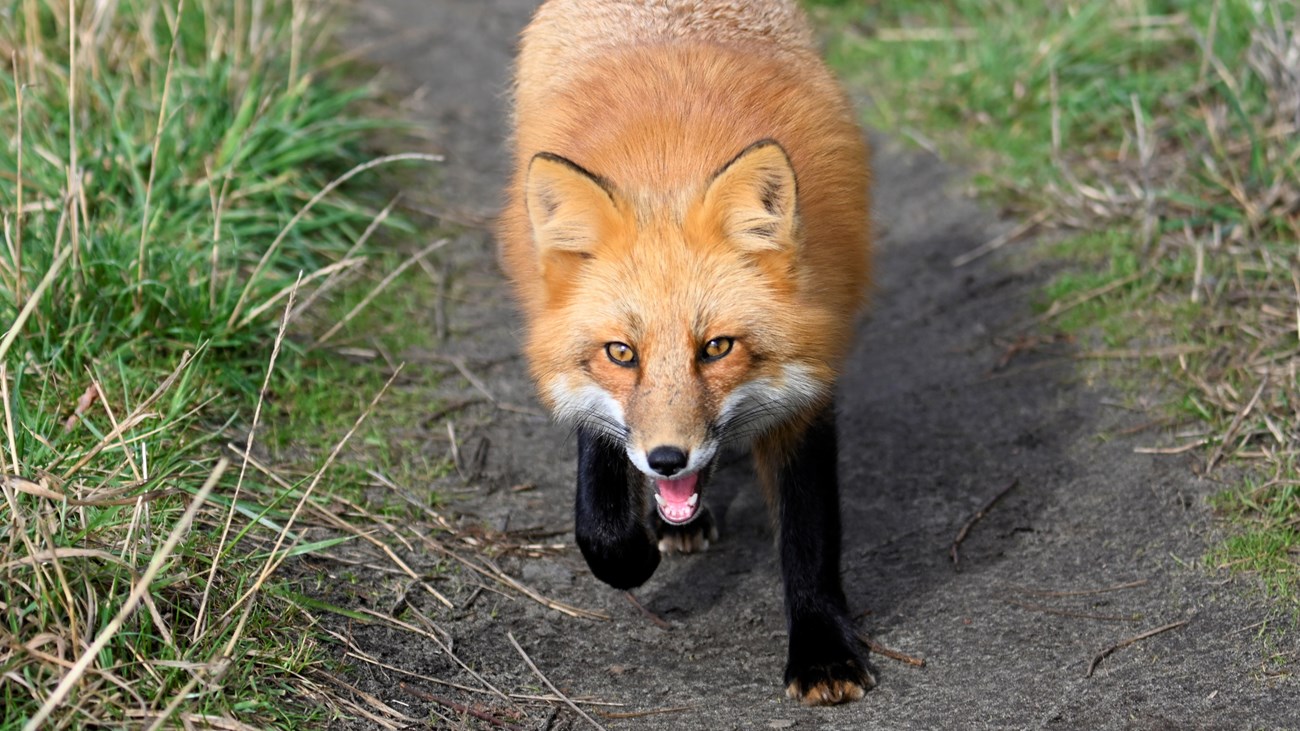Last updated: June 5, 2023
Thing to Do
Observe Animals on San Juan Island

Courtesy of Brad Pillow
Take home great memories of San Juan Island by viewing wildlife ethically – in a way that respects the space wild animals need to live free from harassment.
San Juan Island National Historical Park offers unique opportunities to observe diverse wildlife, from marine mammals to deer and red foxes. When you visit the park, you are visiting their home.
"The Best Relationship is a Long-Distance Relationship"
Please keep a respectful distance (at least 75 ft/23 m, or the length of two buses) at all times to give wildlife the opportunity to hunt, raise their young, rest, and live free from human harassment.
View Wildlife Ethically
-
Do Not Feed Wildlife
It's not just a snack. Animals that get used to eating human food are often attracted to roads, where deadly accidents can happen. Human food can also weaken wild animals’ immune and digestive systems, leading to sickness. Unfortunately, some animals have become conditioned to seek human food—it is your responsibility to move away if an animal approaches you.
-
Stay on Trails and Leash your Dog
The park is home to the world’s only remaining population of endangered island marbled butterflies. Off-trail boots and paws may accidentally crush fragile butterfly larvae and chrysalises. Help protect these hidden pollinators by keeping yourself and your pets on the path.
-
Give them Room – Use Your Zoom!
By using binoculars or a telephoto lens, you’ll see more of an animal’s natural behavior and activity. Foxes and other wildlife, including birds, need space free from harassment to hunt, raise their young, and rest. If an animal responds to your presence, you are too close.
Thank you for being a steward of San Juan Island!
Some wildlife can be viewed from roadsides, parking lots, or even from your vehicle. If you choose to hike, no trails at American Camp meet all ADA standards for accessibility to wheelchair users. Trails that are often more accessible to individuals with limited mobility include the trail from the visitor center to The Redoubt and some of the trails that start at the Jakle's Lagoon parking lot. Please contact the American Camp visitor center for more information.
There are no accessible trails at English Camp.
- All wildlife in national parks are protected by federal law. According to the Code of Federal Regulations, 36 CFR § 2.2, the feeding, touching, teasing, frightening or intentional disturbing of wildlife nesting, breeding or other activities is prohibited.
- 75 ft is the standard NPS regulation for distances between humans and small to medium sized animals. Anything closer is considered wildlife harassment.
- Use binoculars or telephoto lenses for safe viewing. No chairs or tripods are permitted within the prairie (use is limited to roadside areas and established parking areas behind split-rail fencing).
- If an animal sees you and responds, you are too close. You must remain mobile. It is your responsibility to move away, maintain the appropriate distance, and discourage interactions.
- Groups of people shall not create barriers that constrain animal movement.
- All groups must stay on park designated trails, park in designated parking areas, and avoid creating new social trails or walking in open areas off designated trails.
- Do not feed, bait, or use devices to call wildlife.
- Do not stand near or on top of animal dens.
